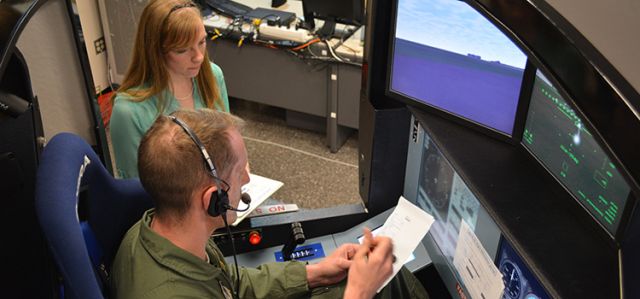Title
Wing/Wall Aerodynamic Interactions in Free Flying, Maneuvering MAVs
Document Type
Conference Paper
Publication Date
6-2011
Publication Source
29th AIAA Applied Aerodynamics Conference
Abstract
Particle Image Velocimetry (PIV) is used to study the aerodynamics of interactions between maneuvering Micro Air Vehicles (MAVs) and building walls. MAVs must be capable of flying in complex terrain which often involves complicated flying conditions. One of the main missions for MAVs involves navigating through an urban environment and avoiding obstructions. Little research has been devoted to the possibility of the wing/wall continue to evolve, it will be necessary to implement tools to take wing and wall aerodynamic interactions into account for the safety of the vehicle and the success of the mission. This research focuses on the aerodynamic interactions of a fixed wing MAV while flying and maneuvering in close proximity to a wall. The flight testing is conducted in the fully enclosed Micro Air Vehicle Integration and Application Research Institute (µAVIARI) indoor flight test lab at Wright-Patterson Air Force Base in Dayton, Ohio.
This lab contains 60 motion capture cameras used for real-time position and velocity tracking of vehicles. PIV is performed in the flight lab in order to capture data on the wingtip vortices while an off the shelf RC airplane manually flies straight and maneuvering flights along the length of an artificial wall structure at both high and low velocities. Baseline tests involving straight and maneuvering flights at high and low velocities are also completed with the wall present. The wall causes the turning test wingtip vortices to have a lower average vorticity magnitude value near the wall. This average vorticity magnitude represents a preliminary estimate of circulation. Until more time is available to process the existing data in a more rigorous manner, this average vorticity magnitude provides a relatively normalized comparison of vorticity. The slow tests also tend to have higher convective velocity of vortex propagation values over the fast tests. A potential flow model is also in progress to model the aerodynamic interactions between fixed MAVs and building walls. This research will be used in the future to devise predictive algorithms for closed loop flight controls for MAVs to help them accurately fly in close proximity to walls and avoid aerodynamic hazards.
ISBN/ISSN
978-1-62410-145-8
Copyright
Copyright © 2011, American Institute of Aeronautics and Astronautics
Publisher
American Institute of Aeronautics and Astronautics
Place of Publication
Honolulu, HI
eCommons Citation
Geyman, Matthew and Altman, Aaron, "Wing/Wall Aerodynamic Interactions in Free Flying, Maneuvering MAVs" (2011). Mechanical and Aerospace Engineering Faculty Publications. 107.
https://ecommons.udayton.edu/mee_fac_pub/107
COinS




Comments
Permission documentation is on file.